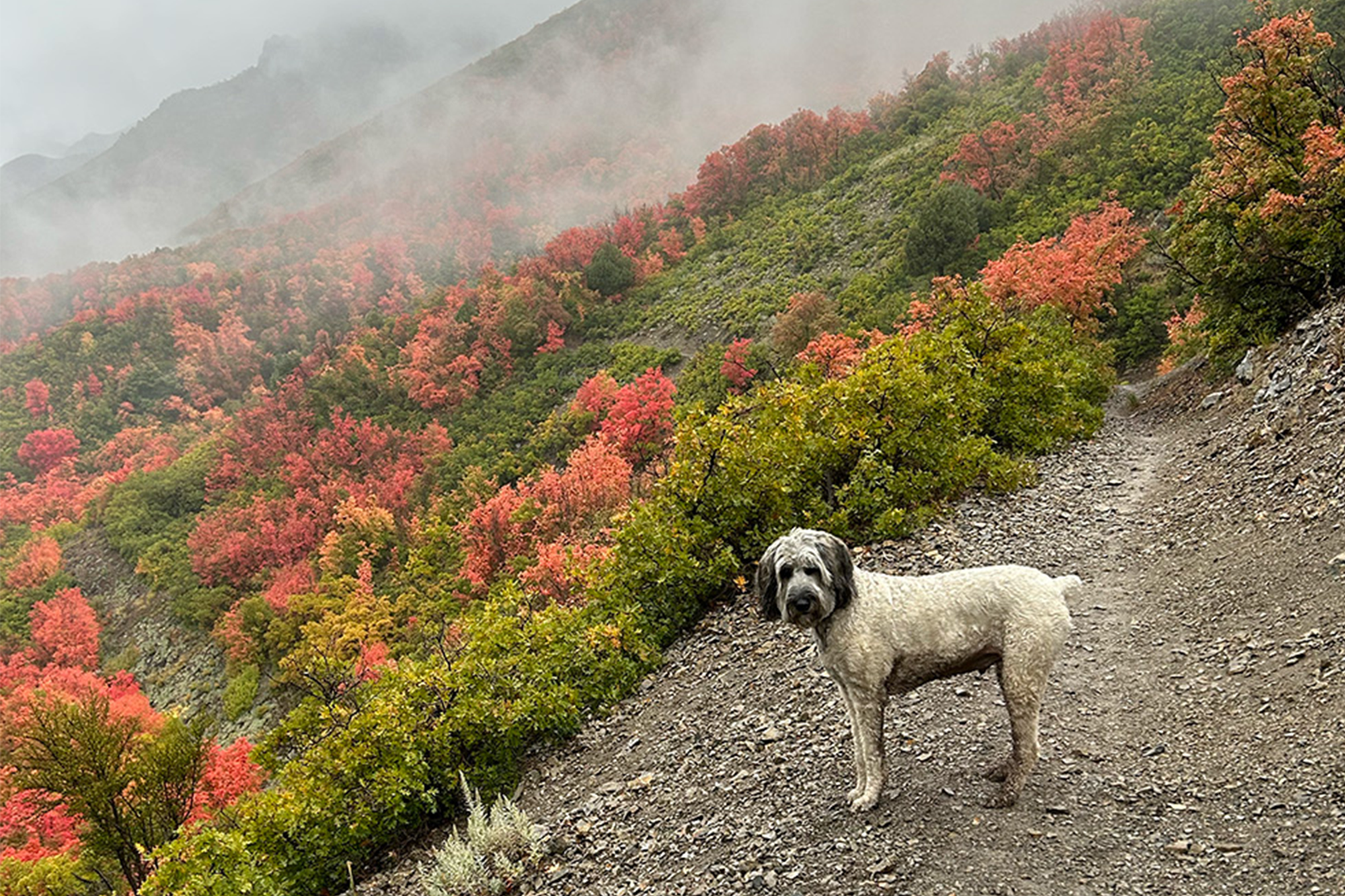
FALL’S FLAMBOYANCE
To many, Utah’s fall leaves are a dazzling display of nature’s beauty. To Eleinis Ávila-Lovera, the autumnal switch to reds, yellows, oranges and purples tells a chromatic story of survival.

Eleinis Ávila-Lovera. Banner photo: Archie
enjoys the fall leaves changing in Millcreek
Canyon. Credit: Jessica Taylor
“Whenever I see plants outside, I’m always thinking what’s going on at a cellular level and why they’re doing what they’re doing. It always goes back to what’s best for the plant through evolutionary time,” said Ávila-Lovera, assistant professor in the School of Biological Sciences. “We might think that they just want to put on a show for us, but the changing fall colors are part of a strategy that allows these plants to survive the climate they experience in their natural habitat.”
Ávila-Lovera is a plant ecophysiologist who researches how plants respond to and tolerate drought. She figures out the mechanisms and traits underlying plant strategies that allow vegetation to cope with extreme water limitations. For example, some desert plants drop their leaves during the hottest and driest months to preserve moisture. In the mountains, the psychedelic foliage works in much the same way—trees that are deciduous drop their leaves to preserve nutrients and prevent freezing over harsh cold winter months.
The science of autumn leaves
Fall officially begins after the autumnal equinox, when the Northern Hemisphere begins to slowly tilt away from the sun. The shortening daylight triggers the beginning of the changing colors.
“Deciduous trees want to drop their leaves in a controlled way to preserve some of their nutrients and sugars. This process is called leaf senescence,” Ávila-Lovera said.
Read the rest of the story by Lisa Poster on @TheU.
